Not only did I spend a week in the spa town of Banja Koviljača (Бања Ковиљача) enjoying some medical treatments, I also spent my free time either lazing around or visiting the town and its surroundings.
In the previous sequel of my travel stories I wrote about my search for different villas and houses in the west part of this small spa town, some of which have been declared the monuments of culture.
There are certainly interesting houses in the east parts of Banja Koviljača as well and the one that is closest to the park is Villa Zdravlje in Železnička street.
 Villa Zdravlje
Villa Zdravlje
The architectural paragon for this villa were small typical sanatoriums of the Central European spas built towards the end of the 19th century and the beginning of the 20th century. The villa has a complex and interesting main facade. On the three avant-corps, the central and the two flanking ones, there used to be inscriptions with the name of the house: Vila – Zdravlje – Dr. Jakšića (Dr. Jakšić’s Villa Zdravlje). I could not discern these inscriptions on the flanking avant-corps and even the one on the central avant-corp was barely legible. What could be seen and clearly reflects the name of the villa (zdravlje means health), as well as its original purpose, are the signs of a snake wrapped around a rod, that is, the symbol of the Rod of Asclepius, that are positioned in the upper zone of the flanking avant-corps.
After WWII this villa also changed its owners and purpose. Although at the time of my visit it was in a crumbly state too, the situation was not as bad as in the case of the villas/monuments of culture I had previously seen. It is certainly clear that somebody lives here and when I was passing by, some people were cutting dry branches off a tree and were clearing up a small plateau that flanks the villa. There is hope!
Walking further on in this area, not far from Villa Zdravlje I passed by yet another villa that was not mentioned in my materials since it is obviously not considered a monument of culture at the national level, although I did find some praises about it elsewhere. This is Villa Draga.
This used to be one of the most opulent villas of Banja Koviljača, but now it is in a catastrophic state. The villa originally belonged to a wealthy merchant Marjan Katić whom even King Peter I Karađorđević used to visit since they were close friends. One of the first telephones in Serbia was installed in this villa and it was also among the first to have a toilet with running water.
The sad fate of the villa started already during WWI when it was damaged during the Battle of Gučevo and in 1933 the villa was bought from the owners by the Yugoslav State Railways JDŽ that also renovated it. After WWII the ownership was transferred to the Yugoslav Railways and the villa was used for the temporary stay of railway workers spending their holidays in the spa town. Later, during the 1990s, it was used for the placement of refugees. Nowadays, it is on the verge of falling apart, although it is still owned by Železnica Srbije (Serbian Railways).
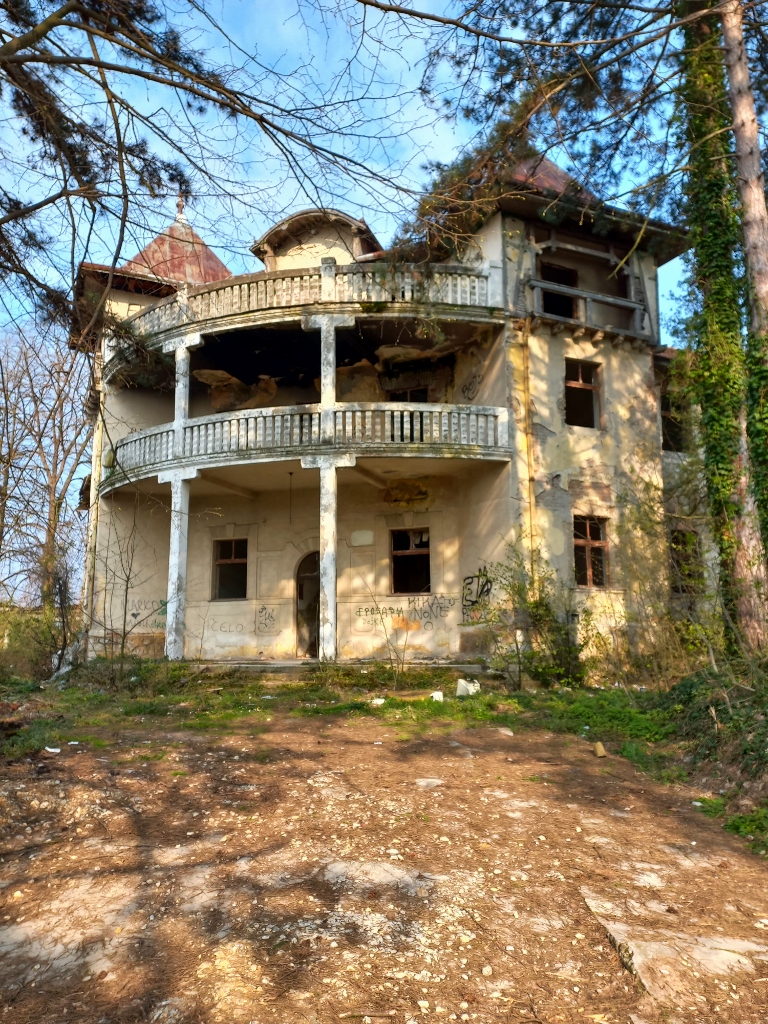 Villa Draga
Villa Draga
Also not far from the “Special Hospital for Rehabilitation Banja Koviljača” there are two villas that are classified as monuments of culture. I looked for them unsuccessfully a couple of days earlier in a completely wrong place, since the Google map and the map from my materials were inaccurate.
In the end I found their approximate location on a local internet map, but I really had to do my best in order to find them, since there were no signs and the map was still not quite precise. By the way, MY map, has the accurate and verified position of these villas (as well as all other places I visited during this trip).
When I finally did find these villas, I was very pleased. Not only because I succeeded in my endeavour, despite the difficulties and obstacles, but also because they were in a better state than those previously seen. The first one I came across was Villa Gučevo.
 Villa Gučevo
Villa Gučevo
The villa was built between 1904 and 1907, and it represents an example of the urban academic architecture modelled after the Central European spas. It changed owners already before WWII and in that period it served as a small B&B place for spa guests, but after WWII its purpose was changed again and it was turned into a residential building for several families.
When today you look at Villa Gučevo from the angle at which I took the photo above, one can get an impression that it was fully restored. This impression is erroneous. When you look at it from the other side, you can see that one of its segments has been left completely decayed. According to what I heard, the owners of different segments could not agree and the result is what can be seen in the photo below.
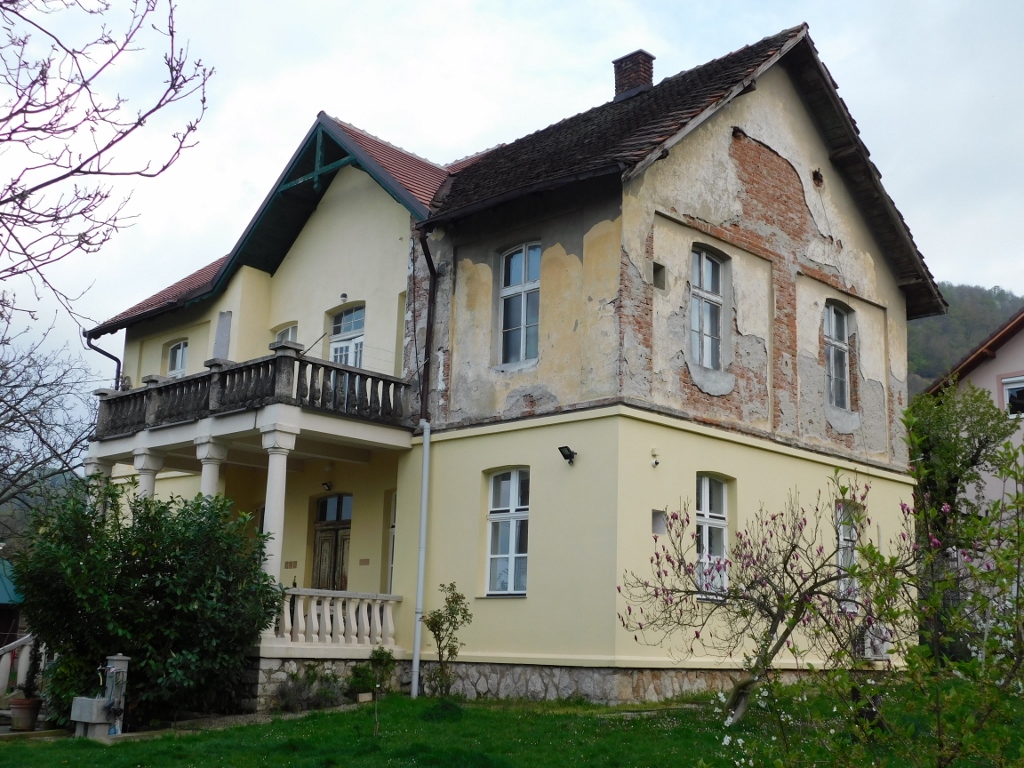 Villa Gučevo
Villa Gučevo
By the way, the villa is decorated by a beautiful access staircase and a porch with columns that carry a balcony with a fence made of balusters.
 Villa Gučevo
Villa Gučevo
At first, I could not fathom where another villa was, but as it turned out it was right there in the adjoining plot of land, only hidden by the vegetation. This was also the only fully restored villa from the list of the Institute for the Protection of Cultural Monuments of Serbia – the Villa of Dr. Petrović.
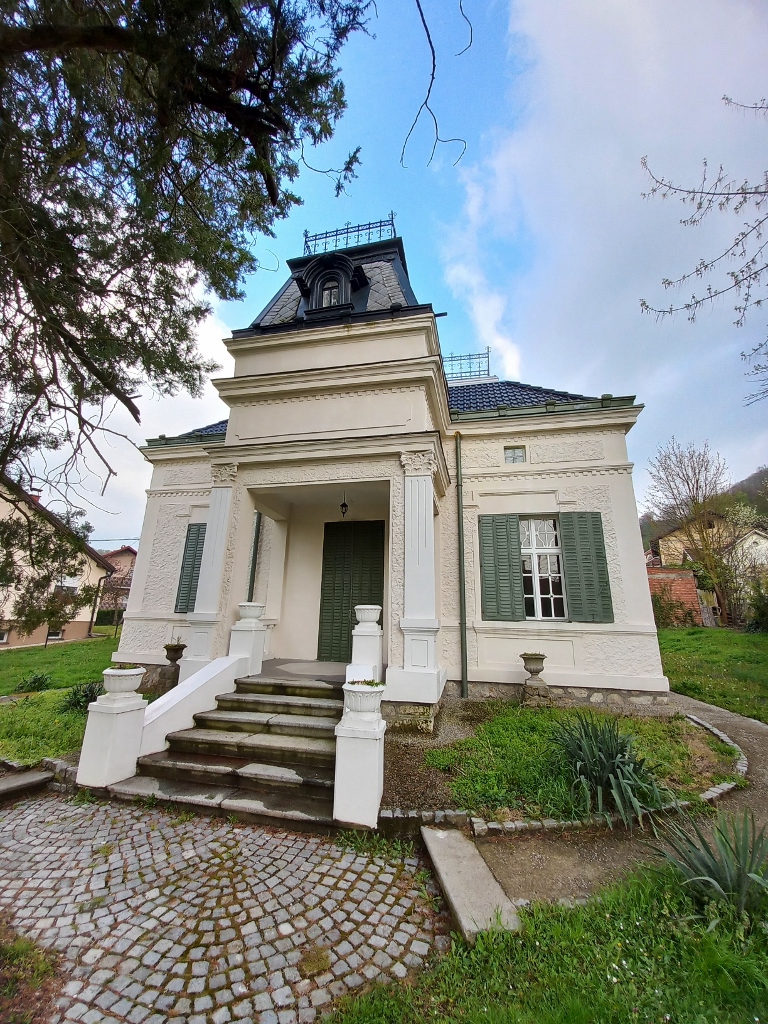 Villa of Dr. Petrović
Villa of Dr. Petrović
According to what I heard when I was in the spa town, this villa was restored by the owners and it is for sale now. I’m not sure this is accurate, maybe these are just rumours, but in any case, when I peered through a window I could see it was completely empty inside.
This small, but very lovely villa was built at the beginning of the second decade of the 20th century as a summer house of a respectable doctor from Šabac. It is made particularly pretty by the accentuated porch with columns above which there is a mansard roof in the shape of a truncated pyramid on the top of which there is a decorative fence made of cast iron.
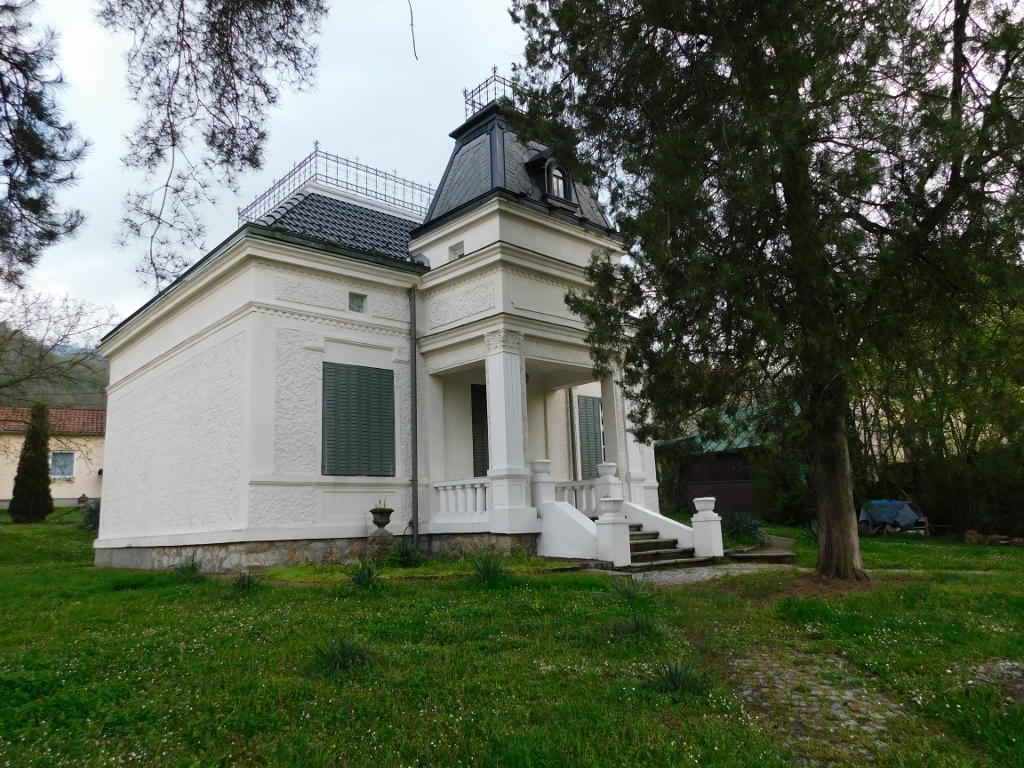 Villa of Dr. Petrović
Villa of Dr. Petrović
With this I completed my quest for the spa’s villas that are categorised as monuments of culture at the national level (with the exception of Villa Sunčica, which I realised was also in the list only once I had returned home). They may not seem to some people as particularly special and important to deserve such categorisation, but things should be put into a proper historical context. It was only in the second half of the 19th century that Serbia gained its full independence and was at the time primarily the land of often uneducated peasants, so the raising of the level of education of the entire nation, the development of the urban class, as well as the overall urban development were still at initial stages at the end of the 19th century and the beginning of the 20th century. When I say that the Serbs for the most part were “uneducated peasants” I absolutely do not mean anything bad – they were primarily honourable and hard-working people who loved their country (one should just remember the heroism from WWI), but the fact is that the centuries under the Ottomans where the local population was the rayah had its consequences.
Because of this, the construction of urban villas and summer houses adjusted to the spa setting and in line with various art movements, while following the paragons from the Central Europe, constitutes an important step in the overall development of the nation.
While looking for these villas and walking around Banja Koviljača, I also came across and noticed much more. Some details were nice, some were fun, some confusing, but I intensely enjoyed every moment. If I may say, I must admit that there is one trait that I particularly like about me – it is the openness to the impressions and sights and looking at the world with my eyes wide open. I think I am a rather contemplative person, but when I walk and do the sightseeing, I look all around me (this is psychologically and philosophically ideal – here and now) and with very rare exceptions I deal with what I can see and what I pass by, and not with my various thoughts that are not necessarily linked to that place and that moment. Even when I “philosophise” within the comfort of my head while walking, I still look to the left and right with the full awareness about the sights around me.
In line with that, here is a series of photographs of different interesting sights I noticed during my walks. I had a lot of fun sending these photos to my friends alongside various comments and I also know they had fun, too.
So, while looking for a couple of villas in the east part of the spa town, which was completely erroneous, I passed by water spring “Ilidža.” According to what I read later on, the results of the tests of the water that flows here incessantly show its exceptionally high quality.
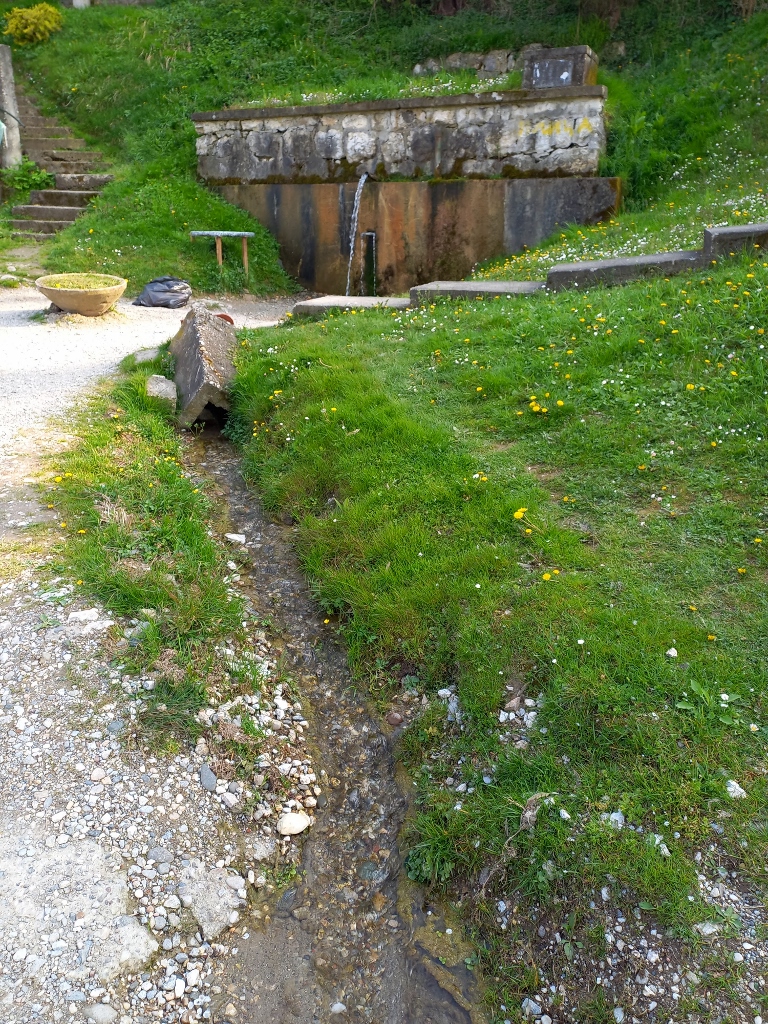 “Ilidža” water spring
“Ilidža” water spring
In the proximity of the water spring, I also noticed a very interesting sight. I commented jokingly to my friends when sending the photos by phone that I had come across an unofficial contemporary art open-air museum in the shape of an installation dedicated, admittedly, only to one single topic – the car windshield. There were several things that were odd about this. First, I did not notice any windshield shop nearby and even if there were one it would be strange that the glass windshields were left out in the open by a public road. Second, the windshields were actually arranged quite neatly, they were not just piled up, and this was done precisely in the fields of a concrete support wall between pilasters. In other words, they were not left there haphazardly, but rather they followed a concept quite clearly. Could this not be a great example of conceptual art?
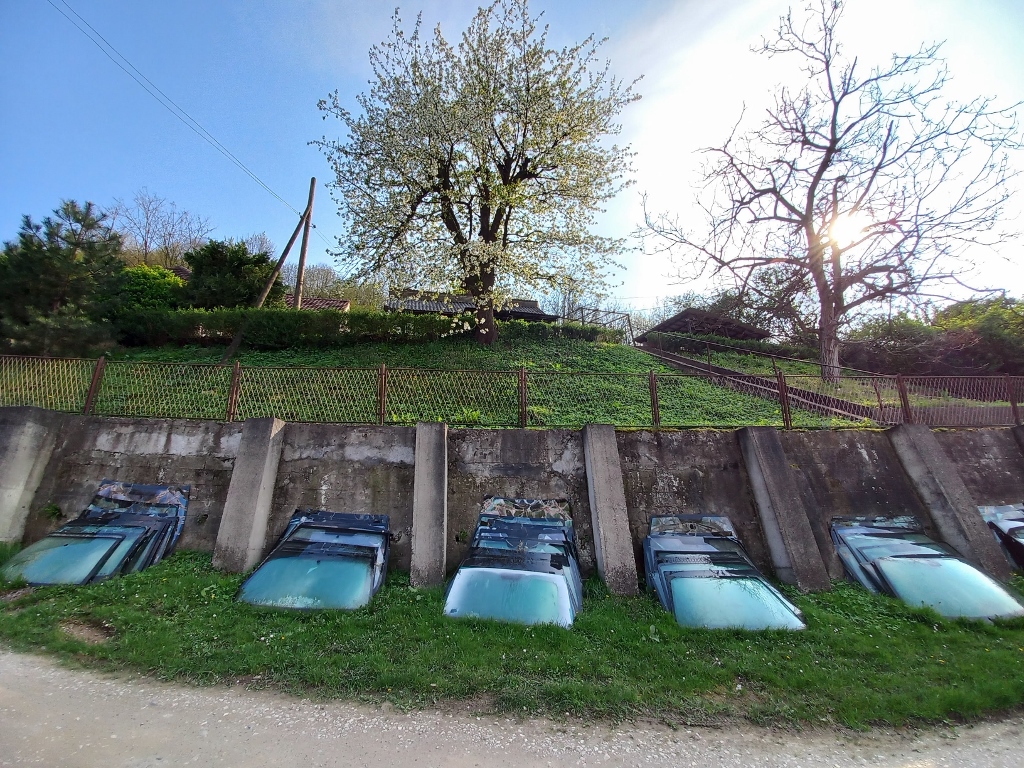 Unofficial open-air contemporary art museum
Unofficial open-air contemporary art museum
As I’ve said, I searched here, in the east sections of the spa town, for two villas and this was indeed a little strange, since this seemed to be sufficiently far from the centre of the town, but who was I to question the maps that clearly showed where the street I was looking for was. As it turned out, the maps were wrong, so when I realised this I simply turned around and started to walk back towards the centre.
Along the way I passed by the front yard of a house where in comparatively dense vegetation I noticed a couple of gravestones. It is not common for the dead to be buried on family estates, but, there you go, there are examples for this, too. Judging by the appearance of the gravestones and the worn out letters I could not clearly read, I presume that this is the place of interment of people who were killed in one of the world wars. There was a lot of this here. Too much actually.
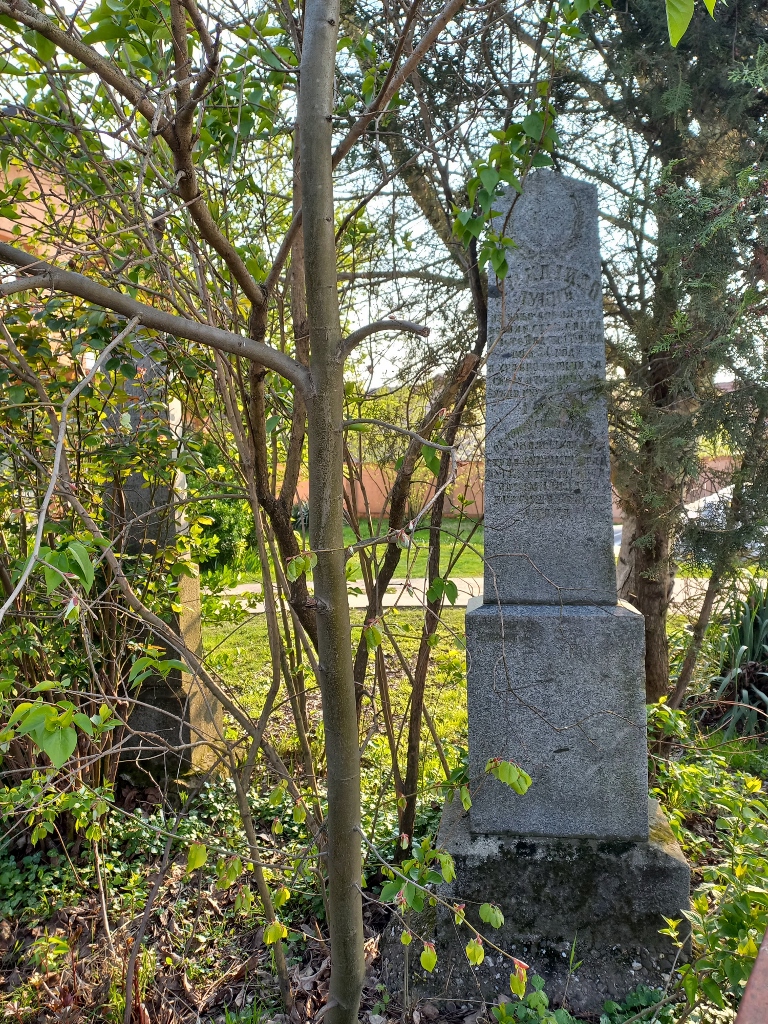 Gravestones by the road
Gravestones by the road
After a while I also noticed a car that was completely covered by an incredible quantity of mud and that was waiting to be washed in one of the carwash service stations. I found this quite interesting and a little further I came across some more field vehicles also covered in mud and also waiting for their turn to be washed. It was obvious that there had been some off-road racing in the area and that the drivers competed along some dirt roads around the spa town, but I joked with my friends when sharing the photos that there must have been a Jurassic Park opened near the spa town. At least this was my association.
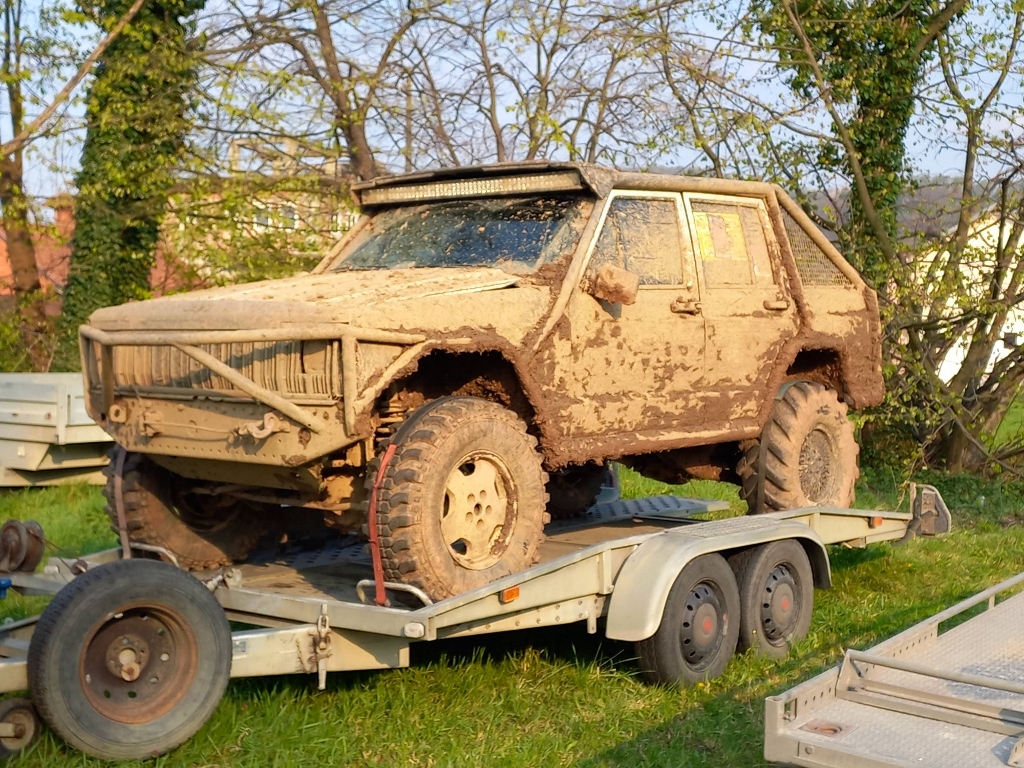 Off-road racing vehicle after the race
Off-road racing vehicle after the race
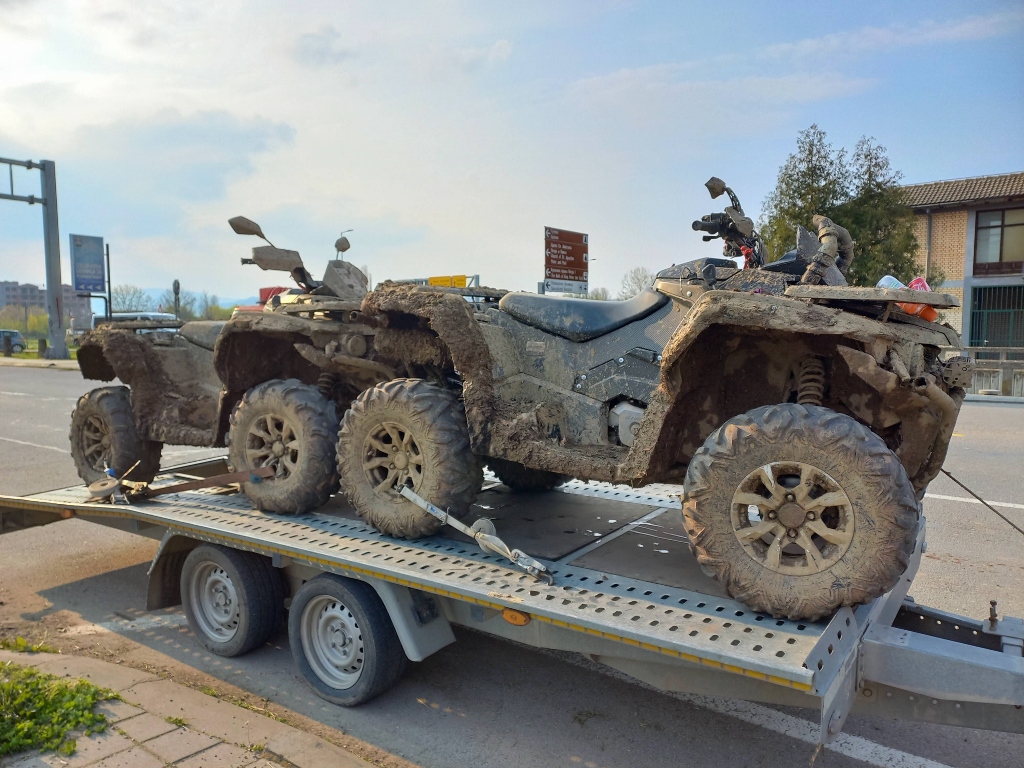 Off-road racing vehicles after the race
Off-road racing vehicles after the race
But, while walking around the spa town, on one occasion I noticed yet another interesting vehicle – almost a vintage car that was wrapped in a plastic cover in order to be protected against rain and snow.
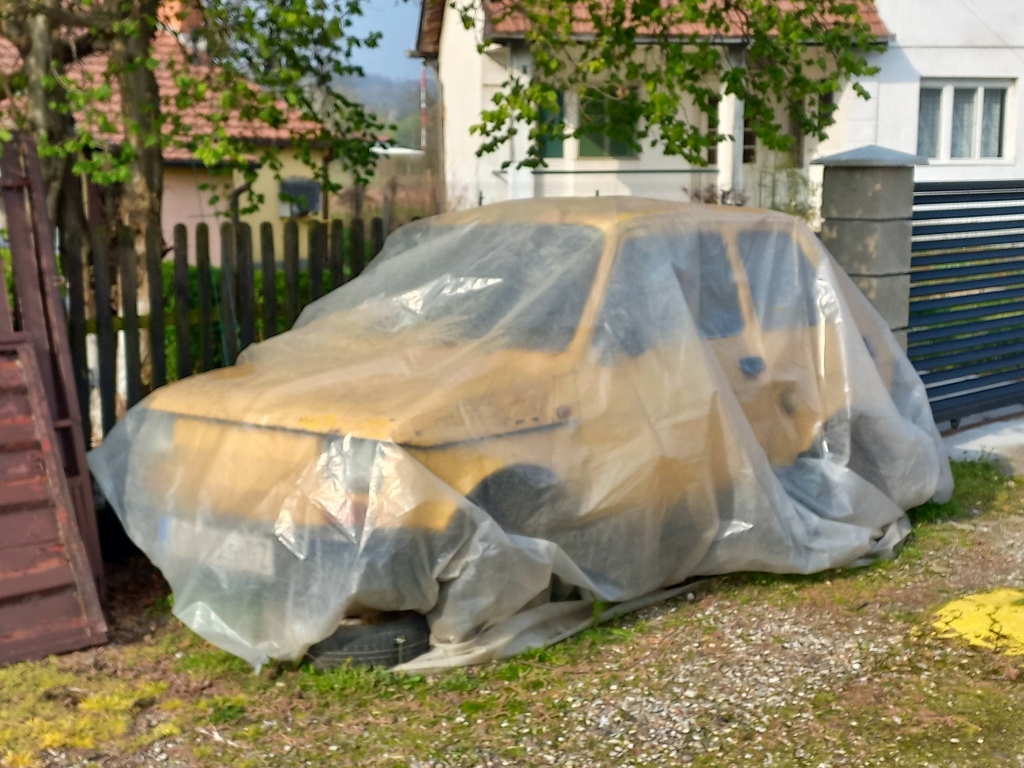 Protected “vintage car”
Protected “vintage car”
But perhaps the funniest sight that I came across may be seen in the photo below. Put aside the horses in two sizes and the swan, I was seriously amused when I saw a very uncommon statue that I named “The Spa Venus in Blue.” Or maybe her name could be Maja from the Spa?
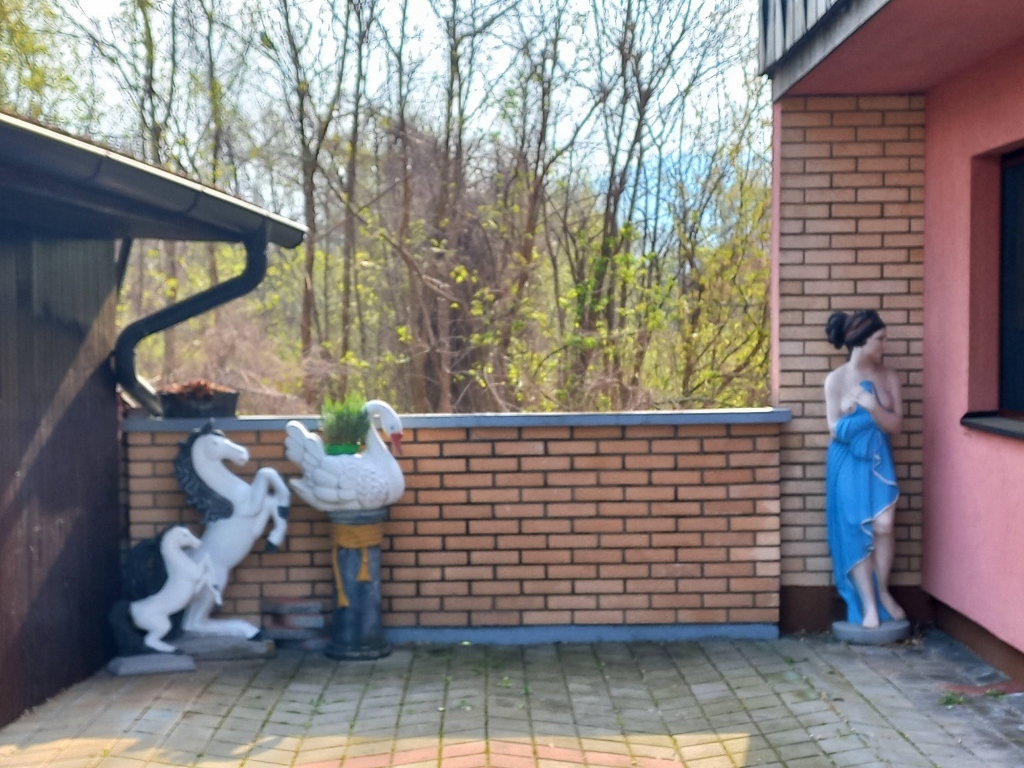 Spa Venus in Blue
Spa Venus in Blue
Also, I once passed by a good example that shows how, instead of being recycled, some things can be used several times and for different purposes, all thanks to quite a creative approach.
 In front of the property of some ecologically aware and creative residents of Banja Koviljača
In front of the property of some ecologically aware and creative residents of Banja Koviljača
But, Banja Koviljača is not only interesting as a spa town and the place where people make all sorts of things. It is also situated in a very beautiful area where one can enjoy nature as well.
As it was springtime, when walking around the town I could often enjoy the blossoming fruit trees that grow in the yards of private houses. The following photo shows a cherry or a sour cherry tree, I’m not sure, but it certainly looks very pretty and plentiful.
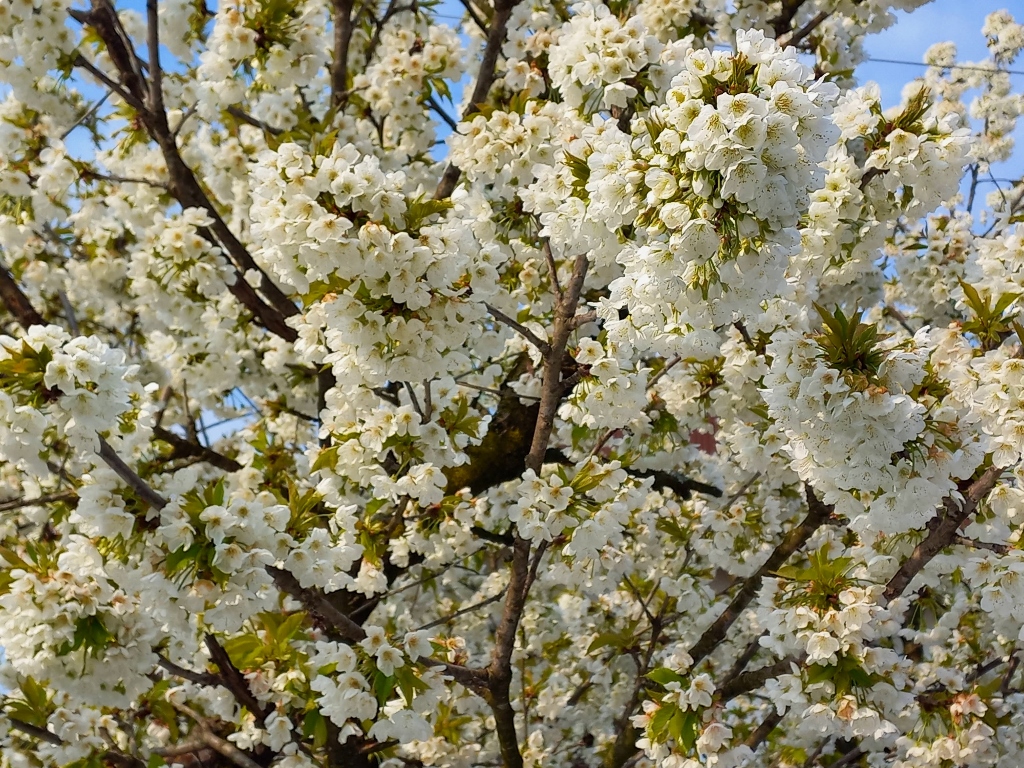 Blossoming cherry or sour cherry tree
Blossoming cherry or sour cherry tree
There are also numerous birds to be seen in the town and this time I singled out a common starling (Sturnus vulgaris).
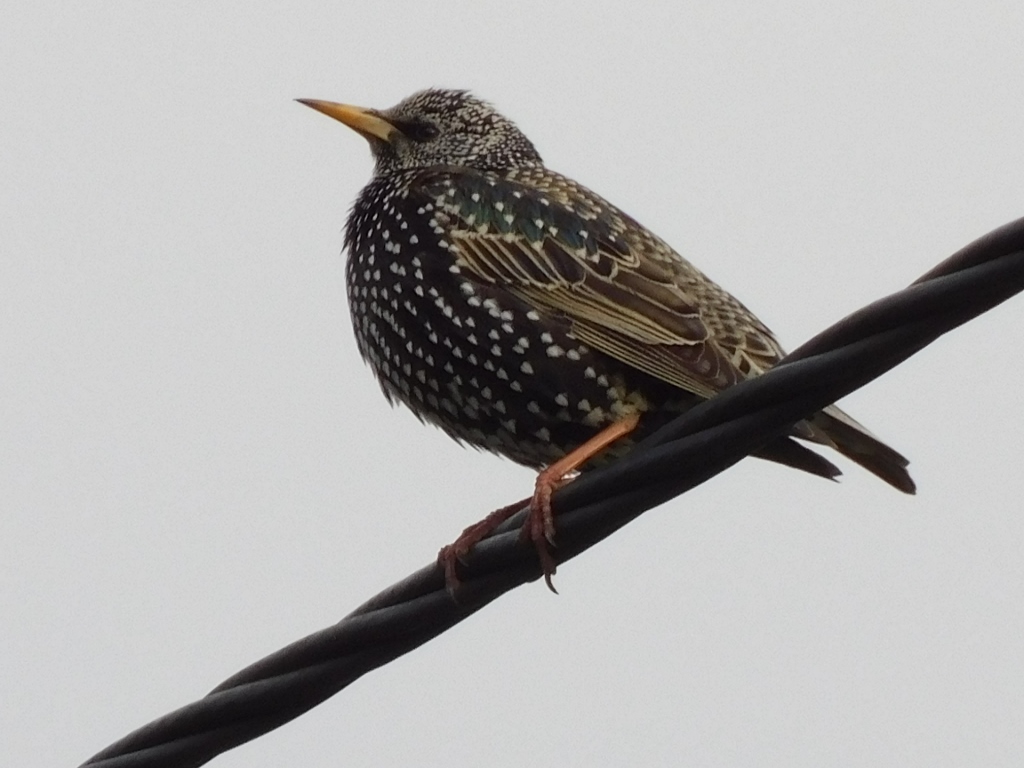 Common starling
Common starling
Near the hospital I saw several grape hyacinths (Muscari botryoides) and when I wanted to take a photo of them, the keen interest in these lovely flowers was also exhibited by a bee.
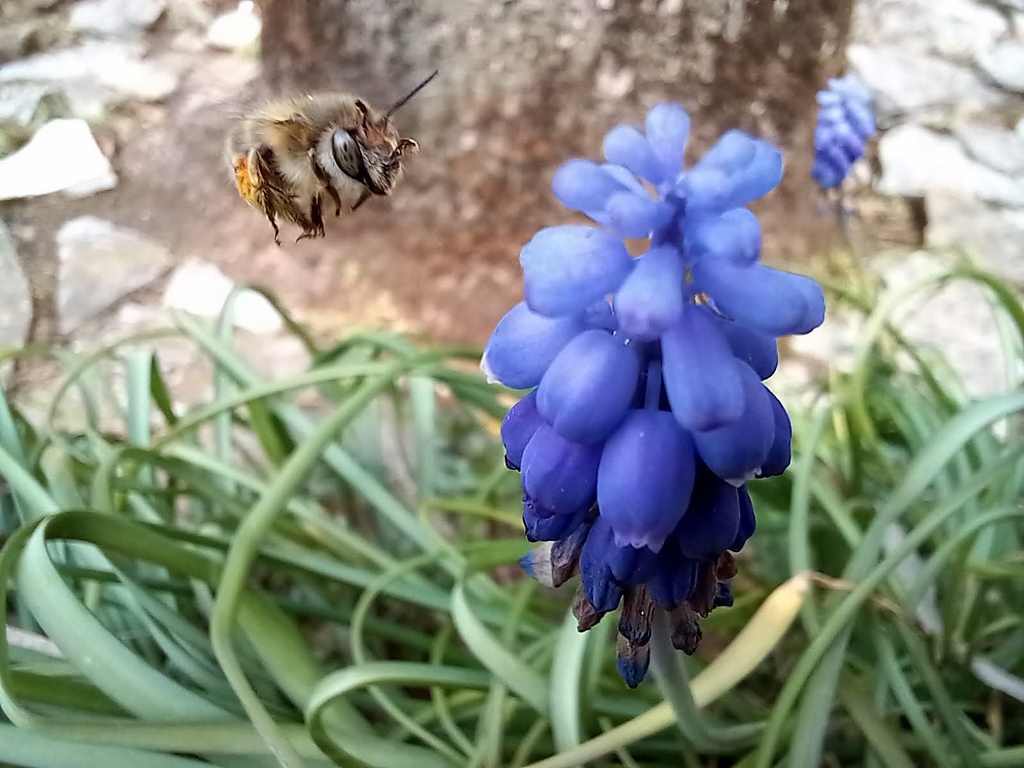 A bee and a grape hyacinth
A bee and a grape hyacinth
 A bee and a grape hyacinth
A bee and a grape hyacinth
I have already mentioned, and it could also be seen in the photos, that right behind the hospital start the slopes of mount Gučevo, as well as a forest through which there are numerous trails in this area.
 Forest above the hospital
Forest above the hospital
There I could see different natural residents, such as a red squirrel (Sciurus vulgaris) that was not in the mood to strike a pose.
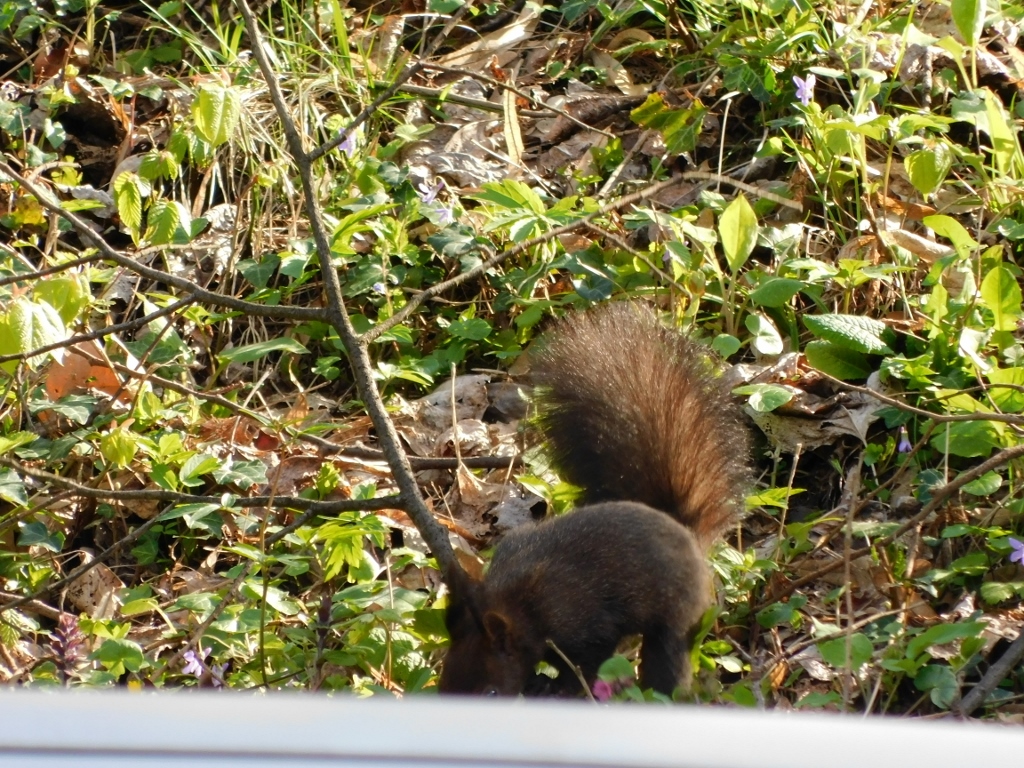 Red squirrel
Red squirrel
Also unwilling to cooperate was a beautiful Burgundy snail (Helix pomatia). When I first noticed it, it was going somewhere at its own pace and when I started to bring my thumb closer in order to have a reference object, the snail stopped and started to retreat back into its shell. To grasp fully the size of the snail, one should bear in mind that my thumb is lightly touching its shell.
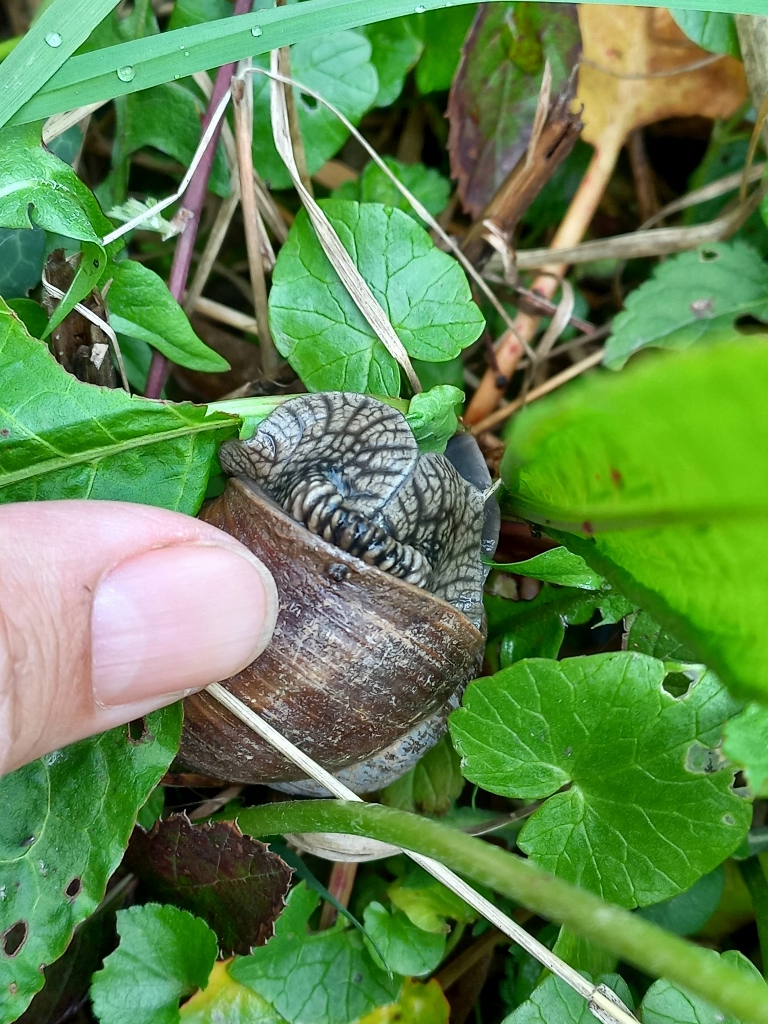 Burgundy snail
Burgundy snail
Since I’m mentioning mountain Gučevo (Гучево) (779 m), one of my trips was to the monument that is on the top of the mountain and that is considered a historical landmark. Again, this is a memorial ossuary built here in order to commemorate the Battle of Gučevo that was fought between Serbia and Austria-Hungary in the early autumn of 1914.
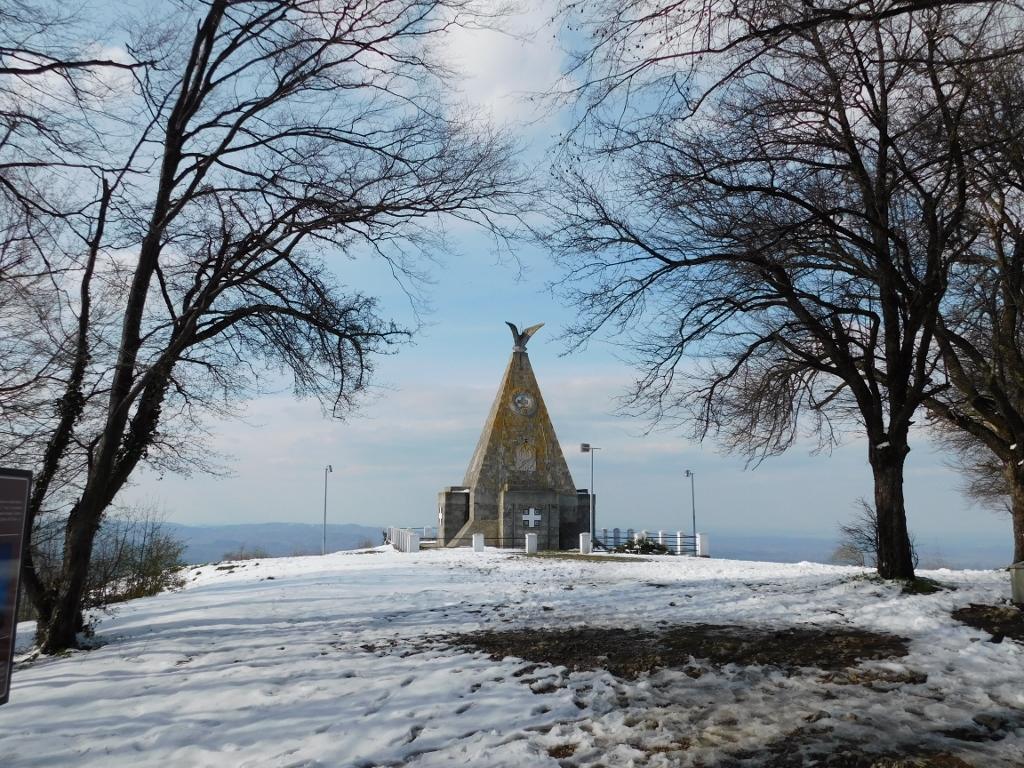 Memorial ossuary on Gučevo
Memorial ossuary on Gučevo
The Battle of Gučevo, which is actually most often called the Battle of the Drina, was the first trench warfare in WWI and it is considered one of the bloodiest battles of the Balkan Front.
After the victory of the Serbian army on the mount of Cer, Austria-Hungary still had plans to advance more substantially onto the Serbian territory and that next attempt took place right here. Bearing in mind the lack of food and primarily that of ammunition, the Serbian army retreated and the Austro-Hungarians advanced into Serbia only to have yet another important battle a couple of months later – the Battle of the Kolubara – after which the Austro-Hungarians were expelled from the territory of Serbia. I have already written about this (https://www.svudapodji.com/en/south-of-belgrade/).
The first memorial on Gučevo’s Crni vrh (Black summit) was built by the Austro-Hungarians in 1917. In the period from 1928 to 1930, that original monument was rearranged and it had an ossuary added that eventually contained the remains of around 4000 Serbian and Austro-Hungarian soldiers.
The monument is around 16 m high and there is a two-headed eagle on its top bearing a Serbian coat-of-arms on its breasts. The male figures with swords pointing down in their hands appear as if standing guard. On the architrave beam above these figures, there are chiselled in verses by Peter II Petrović Njegoš (Prince-Bishop of Montenegro and poet) – “Lucky the one who lives forever, he had the reason to be born.” There are numerous other details on the monument and around it, while in front of it there is the ossuary dug into the ground and covered by a concrete slab.
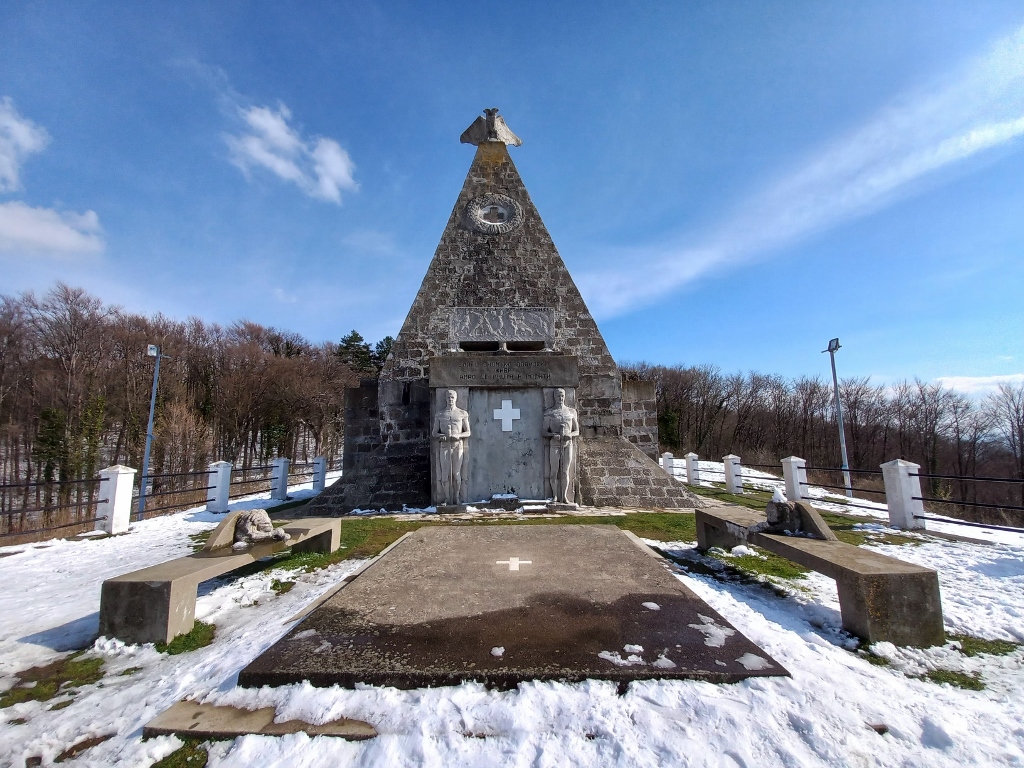 Memorial ossuary on mount Gučevo
Memorial ossuary on mount Gučevo
Nearby the monument, there is also a memorial slab dedicated to Darja Aleksandrovna Korobkina, a Russian voluntary nurse in WWI.
Darja Korobkina was born in Sankt Petersburg in 1888 and was killed by an Austro-Hungarian shell precisely here in the Battle of the Drina in 1914. As a nurse, she was involved in saving and taking care of the Serbian soldiers along the frontline, sometimes as many as over 100 of them a day. Among the Serbian soldiers of WWI and those who are the heirs of the tradition, she is considered a sister and it is precisely on this slab that among other things gratitude to this heroic woman is expressed on behalf of the entire Serbian nation.
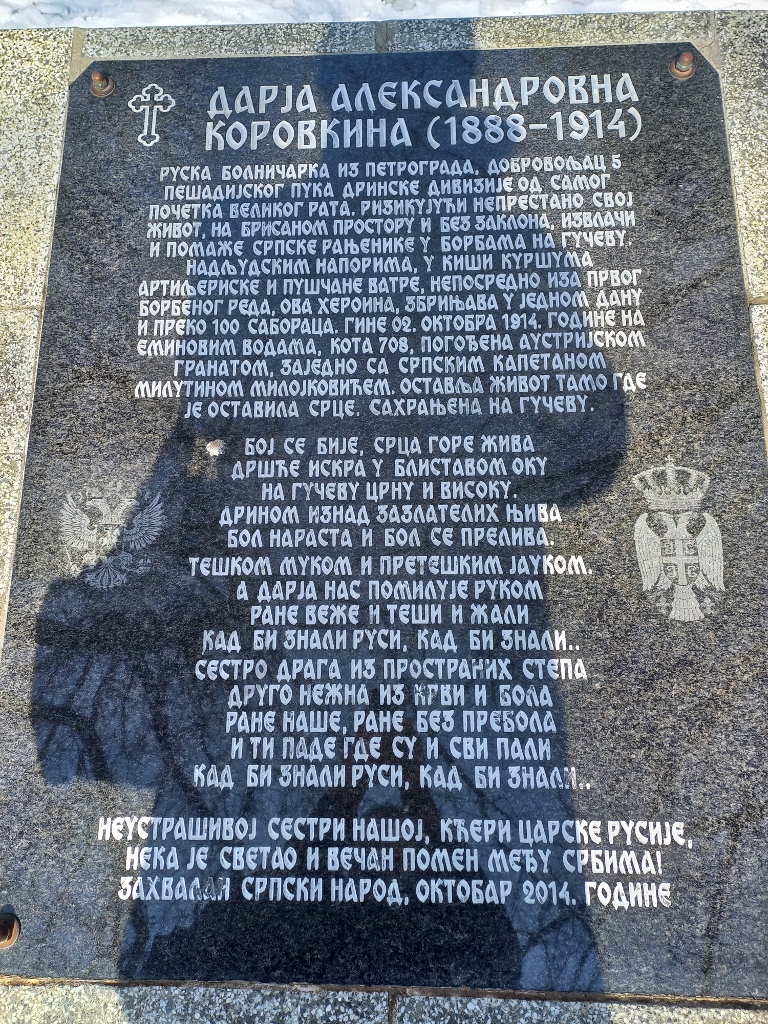 Memorial slab dedicated to Darja Korovkina
Memorial slab dedicated to Darja Korovkina
Not far from here, on the other side of the road in relation to the memorial ossuary, there is also a monument dedicated to Darja Korovkina.
 Monument to Darja Korovkina
Monument to Darja Korovkina
I found it particularly interesting when on a wall of the Special Hospital for Rehabilitation Banja Koviljača I noticed a plaque saying that the Sisterhood of Nurses is named precisely after – Darja Aleksandrovna Korovkina.
 Plaque at the hospital in Banja Koviljača
Plaque at the hospital in Banja Koviljača
As for mount Gučevo in April 2023, everything was quiet and there was a wonderful view at the town of Loznica, the Drina river and Bosnia and Herzegovina on the other side of the river.
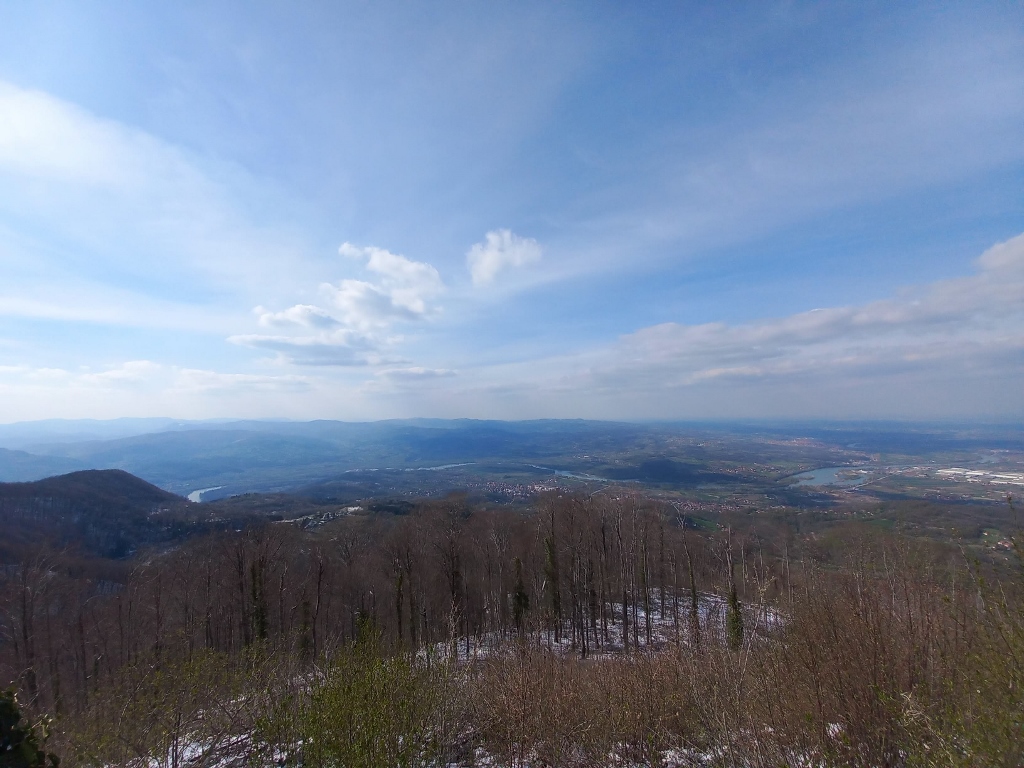 View from Gučevo
View from Gučevo
I could also see the road that led me to the top and that I planned on following on my way down, since despite the sunny weather it was still a little cold.
 Road leading to the top of Gučevo
Road leading to the top of Gučevo
In the warmth of my car, neither the low temperature from the top of the mountain nor the snow seemed too bad any longer. On the contrary, as I descended, there was less and less snow until it disappeared completely and the landscapes started truly to reflect early spring.
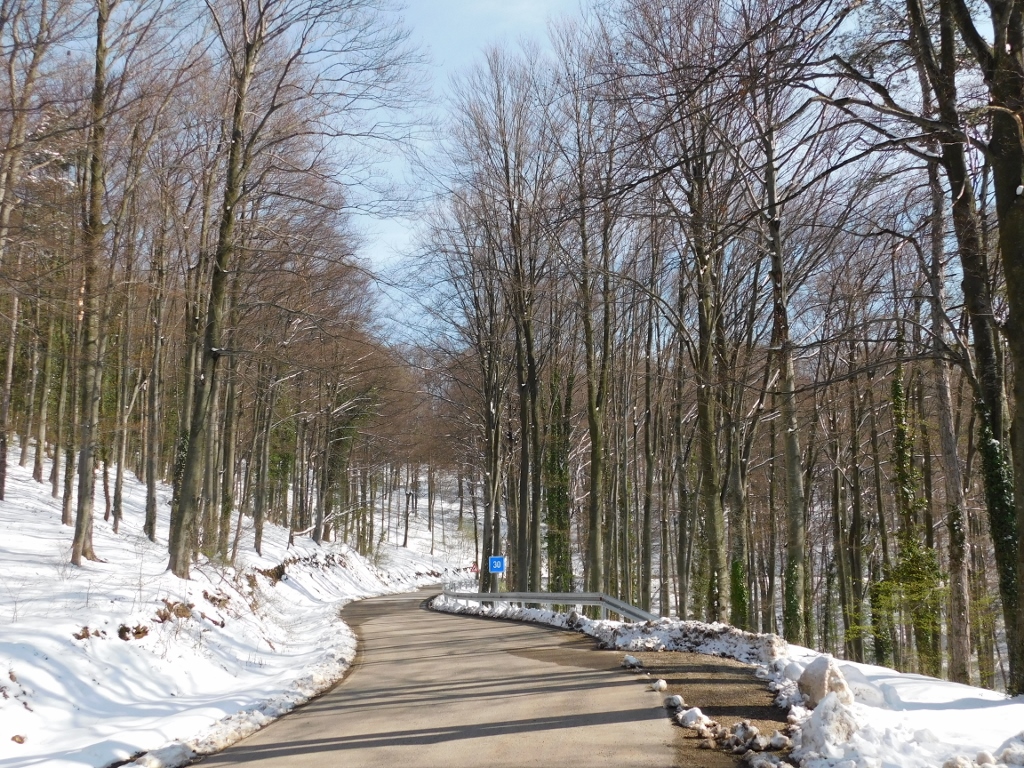 Gučevo, a detail
Gučevo, a detail
I took photo of mount Gučevo and the monument on it once more, this time from the low ground and a couple of days later when I was going to Loznica.
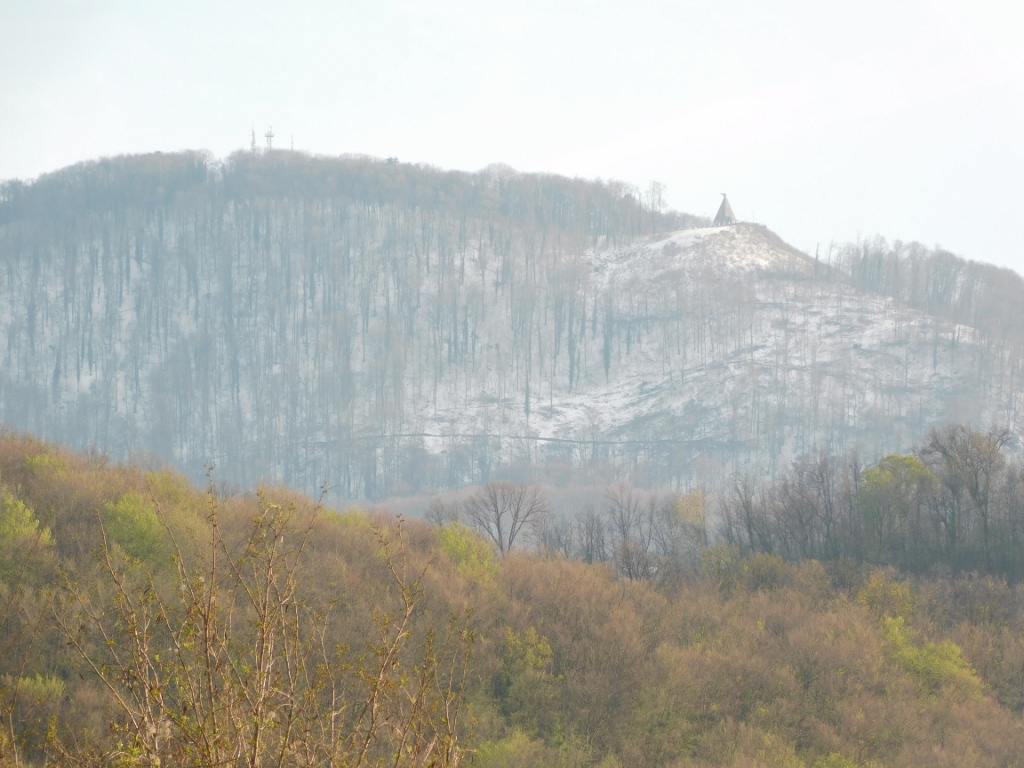 View at Gučevo and the monument
View at Gučevo and the monument
More about my sightseeing tour of Loznica in the next sequel of my travel stories about a part of west Serbia.